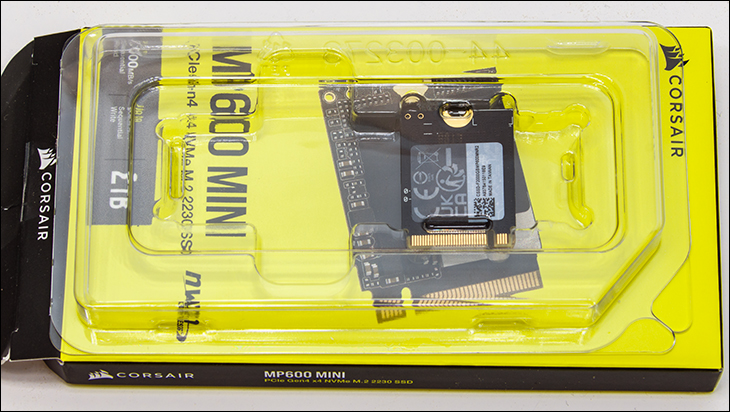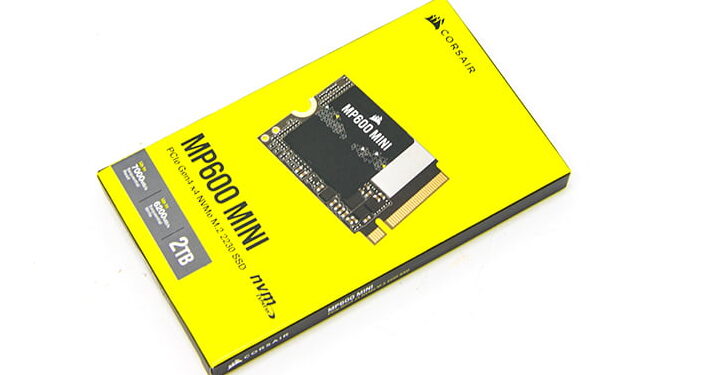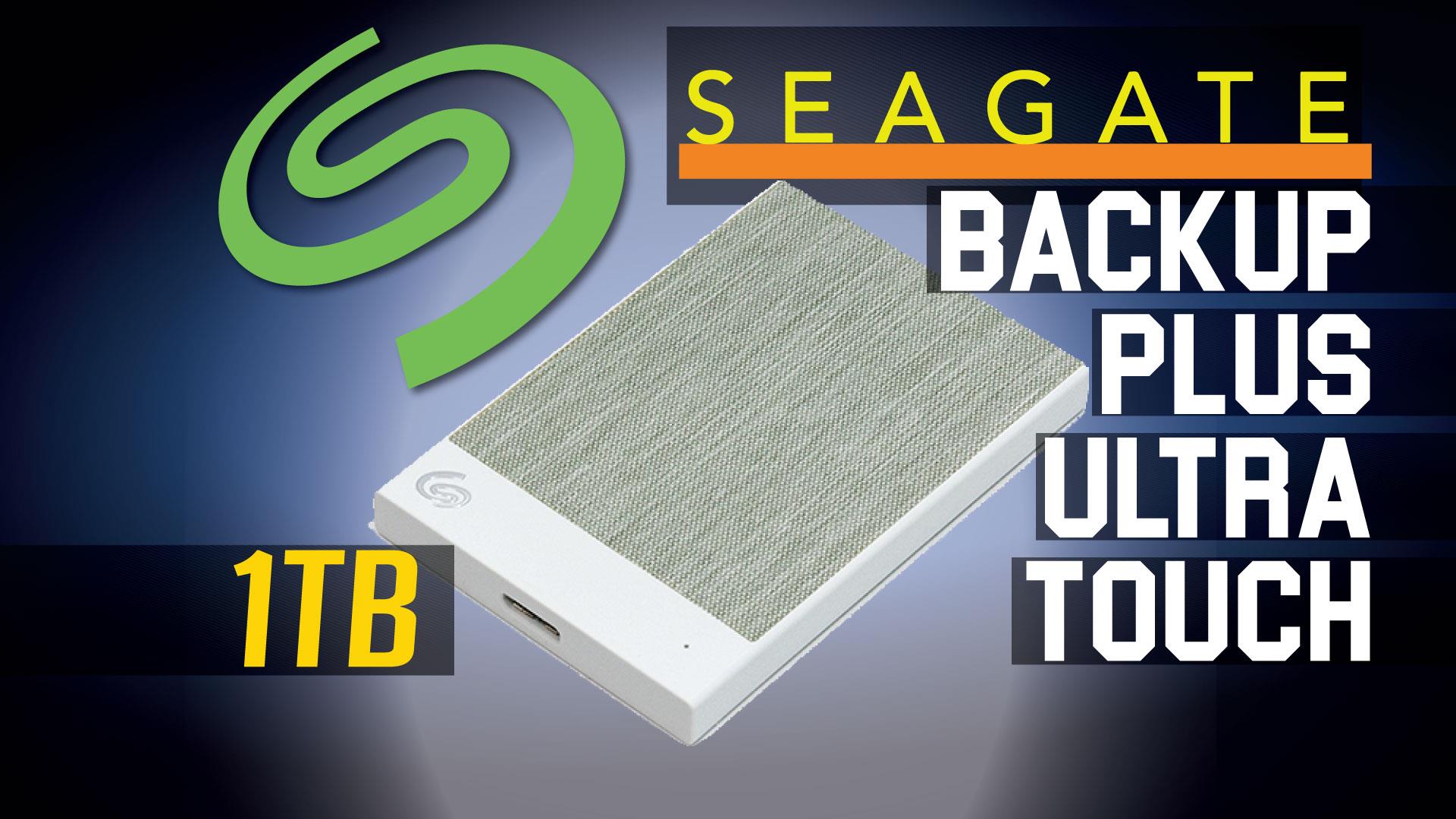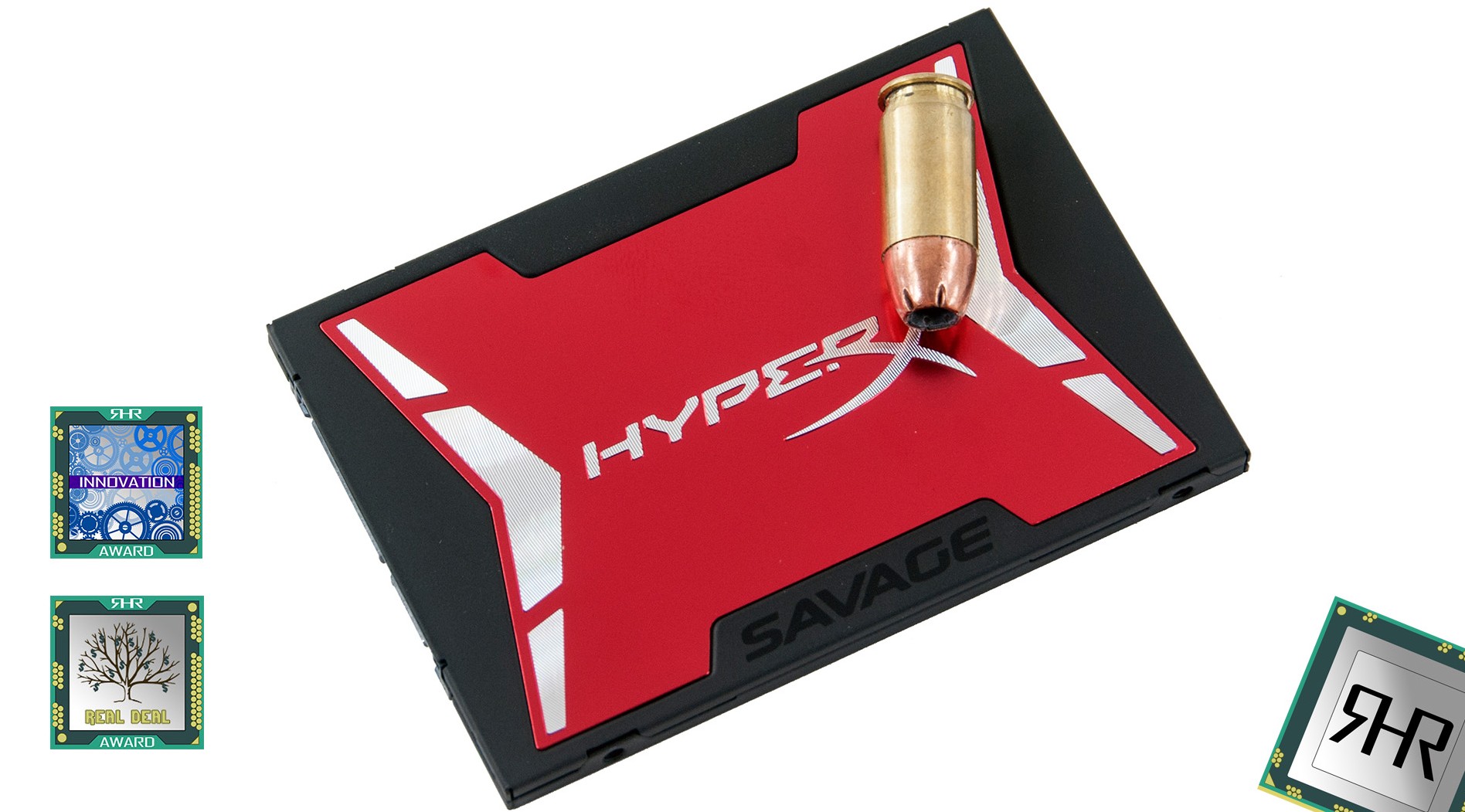
As expected, the shipping container Corsair has opted for is attention getting. Corsair is known for their more… enthusiastic approach to color pallet, fonts, and pretty much everything else aesthetic related. In this regards Corsair has actually dialed things up from their premium MP700 Pro SE series and if we were to consider that box a solid 8 on the aggression scale, this one is a solid 9. That is not to say this is a bad box, and instead it is simply one that may have been tweaked a wee too much towards “talking directly to your inner child” versus “business casual Friday in a box” that we personaly prefer. There however is no denying that this box is attention getting and at the end of the day that is the third most important job it has.

We say third most important… as the most important objective of any shipping container is protecting its precious cargo while in-transit. Just as with their premium MP700 series the MP600 Mini offers excellent internal protection. More importantly, someone at Corsair was really thinking about customer satisfaction as this bad boy offers a form-fitted design for both 2230 and 2280mm M.2 drives. So if you do opt to use an adapter (more on that later) you do not have to tear it down to place it back in its shipping container for storage. Color us impressed… ish.

The downside, and the reason for the ish modifier, is Corsair did not take things to their logical conclusion and include a 1 dollar polymer 2230 to 2280 adapter. Even a 2230 to 2242 would have been fine. This lack of adapters with all 2230s is a pet peeve of ours; considering no one, that we are aware of, does include such an adapter we cannot fault Corsair (too much) for following this (unwanted) trend. It simply is a missed opportunity to help (further) separate the MP600 Mini 2024 edition from the rest of the crowd.

Before we move on, the second most important job a shipping container has is to inform potential buyers of what a given model offers buyers and why it should be chosen over the competition. In this regards Corsair is, once again, above average. Sadly there is a massive asterisk to this that has to be pointed out. That asterisk is that this 2024 edition is a silent change from the 2023 edition… with nothing but the listed speed on the front of the box to let one know of this major component swap. To be blunt the only thing the 2024 MP600 Mini model shares in common with the 2023 edition is the name and the 22×30 form-factor.

Not the NAND. Which was 176-Layer Micron TLC NAND (aka “B47R” Fortis Flash Replacement Gate 1.0 TLC NAND) but is now Toshiba/Kioxia ‘BiCS 6’ 162 Layer Toggle Mode TLC NAND.

Not the controller. Which once was the rather yawn inducing PCIe 4.0 x4 Phison E21t dram-less (and performance-less) controller, is now the surprisingly decent PCIe 4.0 x4 Phison E27t dram-less controller.
Before we go over what these changes actually mean, this is not a true silent change. Yes. Corsair did just switch things up without telling anyone. Yes. If you are realllllly unlucky you may, and can if not careful, purchase the old ‘n’ slow 2023 edition. Which will not be your fault. No one should demand you read the fine print (as the OG model lacks the R2 at the end, and in the performance specs on the back are lower) or test a new purchase to make sure you bought the ‘right one’. That is what models and labels are for! Thankfully Corsair never released a 2TB variant of the ‘2023 edition’ so if you want to be 100 percent sure of what you are buying… get the 2TB’er and skip the 1TB capacity option(s). Just be careful as there is a MP600 2023 ‘Core’ Mini 2TB edition which is best considered a compromise / bridge model between the 2023 and 2024 Mini models. A bridge model that uses the newer E27t controller but is paired with QLC NAND.

Yeah. Not one. Not two. But three possible models all in extremely similar packaging and with extremely similar names. That is not headache inducing now is it?! But, and it’s a big’un, this is not a ‘true’ silent change. Silent changes refer to the business practice commonly referred to as ‘bait and switch’ by lawyers… and judges. It is when a company, like say OCZ pre-Toshiba purchase… or modern Western Digital, will release a killer deal of an SSD. Then after a few months and rave reviews they silently swap out the expensive NAND (and possibly even controller) for a slower/cheaper option. All without any indication beyond date of manufacture to tell one from the other. Here at least there is a different model number and they have silently swapped out inferior grade components for superior. Making it more of a silent upgrade rather than the dreaded silent change.
Moving on. No one. Even those living under a rock and suffering from multiple traumatic brain injuries will argue with the controller change. Yes. Just like the E21T, the newer 27t is a DRAM-less, PCIe 4.0 controller. It too is still a 4-channel design that can handle TLC and QLC NAND. The E27t also uses a 3-core (ARM 32-bit Cortex-R5 based) controller fab’ed on the older 12nm (and not newer 7nm like the E31) process. Just like the E21t. This is all true. It is even true that the E21t also made use of version of SmartFlush algorithms that help keep Phison controllers peppy when under extended I/O demands. However, the E21t is much slower than the E27t. Each of the E27t four channels are rated for 3600MT/s and not 1600MT/s like in the E21t. Also, the main processor core (i.e. the one responsible for handling real-time I/O requests) and secondary cores (the two responsible for background tasks) are all clocked faster than the E21t. In the e21t the main core runs at “up to” 1.0Ghz and its two secondary cores run in the 600MHz range. Compare and contrast that with the E27t’s 1.2GHz + 800MHz specifications and it is easy to see why some argue it is more like a cutdown E25 rather than a newer version of the E21t. Put simply the E27t is everything the E21t could not be and actually delivers surprisingly good levels of performance. It does all that and does it in a package that A) sips power and B) takes up very little space on the PCB… both of which are absolute requirements for M.2 2230 sized drives.

For fans of Micron the NAND change being blatantly better is what is going to hurt a little. However, there is no denying that Kioxia’s BiCS 6 is superior to the previous generation Micron RG 1.0 TLC NAND used in the “2023 edition”. BiCS 6 is so superior that Micron was forced to release their 232-layer B58R upgraded version before BiCS 7 was slated to be released so as to get ahead of the curve and claim the performance crown for a while. ‘Thankfully’ (from Micron’s point of view) BiCS 7 got killed during Toshiba’s spinning off of their storage division into the new Kioxia company… leaving the field wide open for Micron and SK Hynix to dominate the 3rd party NAND sales market (as Samsung really is only used in Sammy drives, and SanDisk is (basically only) used in Western Digital drives).
So what makes this NAND swap a good thing? First and foremost is the NAND used in the 2023 edition was NAND using a brand new, never before seen in the real-world Replacement Gate cell blueprint. No one gets things right the first time. Instead. There is always room for improvement. Whereas BiCS 6 as the name suggests is a 6th generation variant of Toshiba+Samsung’s Toggle Mode NAND design. The Toggle Mode standard is an asynchronous data transfer design that was so superior to ONFI (i.e. Micron, SanDisk, SK Hynix… Phison) that it was not until ONFI’s generation 4.0 that ONFI was able to even reach arguable parity with Toggle Mode NAND. Even then a good argument can be made that the proprietary nature of Toggle Mode NAND is better than the compromise ‘open source’ specifications of ONFI… as Samsung tweaks the specs for their NAND’s quirks and Toshiba tweaked it for their NAND’s quirks. Whereas the Open NAND Flash Interface standard cannot be optimized for any one manufacture’s NAND. Instead it has to work with Micron, SK HYNIX and everyone else’s take on NAND design.
This is why even today Kioxia BiCS 6 TLC NAND is still excellent NAND. It is rather robust. It is fast (2400MT/s, die read speed of nearly 1.3GBps vs B47Rs ~600MBps… and 160MBs die write speed vs under 30MBs for B47R) and it can recover faster from its pSLC cache being exhausted (4ms block erase time!). Better still it is extremely reasonably priced.

What it is not able to do is three-fold… and why Corsair has left the door open for competitors to make an even ‘better’ 2230 E27T+B58R TLC NAND based drive. Firstly, Micron’s latest 2400MTs B58R RG TLC NAND is rated for nearly 1.6GBps die read speed (aka speed at which data can be transferred from the NAND cells off the die and on to the controller’s channel) and its die write speed (aka the speed at which the NAND in native mode can be written to) is the same as BiCS 6. This read improvement over what BiCS 6 can do is a bit of wash as B58R uses a 15ms block erase cycle and BiCS 6 is 4ms. Plus the BiCS block is bigger at 3,660 pages (16KB per page) per block vs. 2,784 page (also 16KB) block size. For those that don’t want to do the math that is 58,560KB worth cells per block in ~4ms versus 44,544KB in 16ms. Thus making it a higher read vs. higher write performance type deal when trying to judge each based solely upon real world, long term, performance.

Of course, this increase in write performance does come at a bit of a cost. Let us be clear. This is a rather cool running drive. In testing it typically consumed under 5 watts and was only about .5 to .75 more electricity than a E27T+N58R (QLC) NAND drive did. This increase however is the downside to high performance Toggle Mode NAND compared to high performance Replacement Gate NAND. To be blunt, even in the extreme a full watt of additional heat to contend with is a non-issue. Yes in an Ally X or similarly sized device the extra warmth may be noticed… but it is only 1 wat of heat one way or the other we are talking about here. Thus we classify it as a “moderately cool to slightly warm” drive instead of a “cool” running drive like say a P310 2TB. Make of that difference what you wish. We personally would never buy one over the other based upon a ‘meh’ difference. However, Your Mileage May Vary… and maybe it will make a difference to you.

With potential issue one and two take care of, the ‘real’ issue with BiCS 6 is that it is only 162-layers per die vs 232-layers for Micron. One could argue bigger cells vs. better designed cells all day long. But we will not. Both have their own pros and cons. Instead, what this difference means from a practical standpoint is that to hit 2TB in a single NAND IC the BiCS 6 NAND chip is bigger. Both in its XY footprint (~98mm2 vs B47R’s ~69mm2 and B58R’s ~70mm2) and its z-height. Of the two… the XY difference is not big enough to fit a second NAND IC on the 2230 PCB so only z-height matters. Basically, 2TB/16Tbit B58R would have allowed the MP600 Mini 2TB 2024 Edition to be a M.2 2230-S1 form-factor drive. With BiCS 6 it is a M.2 2230-S2 form-factor drive. In practical terms this too will not matter to most buyers as both S1 and S2 will fit and it is just dual (Dx) vs. single (Sx) sided that matters. However in some edge cases only S1 drives will and S2 will not. So when in doubt S1 will be a safer choice than 2230-S2 or 2230-S3 model.
This is why, silent change or not, we take zero issue with the components Corsair uses on their 2TB MP600 Mini. They are almost all top notch. There is however one exception. That exception is the fact that pSLC write cache buffer is not a ‘floating’ cache type. Instead it is a flat 50GB. This is puzzling. This is a big reason someone could come along and make a ‘better’ E27T+TLC NAND based drive. After all, Phison does offer their buyers the ability to us a dynamically adjustable (aka ‘floating size’) pSLC write cache buffer. For example on the MP600 Mini 2TB’s main competition, the Crucial P310 2TB, the pSLC adjusts to fill ~80 percent of the free capacity. So when empty the P310 will have a monstrous 400GB pSLC buffer, and when at 75 percent it still will be an impressive 100GB… and that drive is a QLC NAND based drive that requires four bits per each bit of pSLC cache.
As we went over in the P310 review pSLC cache size is not usually all that important for the average home user as Phison implements SmartFlush algorithms on their drives. In a nutshell, the firmware algorithms monitor the write requests and before the pSLC buffer is full, and when it predicts the writes are going to even come close to saturation, it starts the emergency cleaning procedure to try and keep ahead of the write demands. In theory, this means the average home user will never see anything but pSLC write performance.
In theory.
Sure “why bother with the headaches of variable write performance and / or 1TB vs 2TB performance variability when you can just ‘set and forget’ it to a decent size that will comfortably handle home owner’s actual write needs?” is typically a decent argument for why any company would use a hard set pSLC write buffer size. The problem is that is just the marketing spin for SmartFlush… and it too has a big asterisk next to that promise.
The reality of SmartFlush being seamless and virtually unnoticeable is it only works that way when dealing with an SSD that has multiple NAND ICs and multiple dies of NAND per controller lane attached to it. With single NAND IC drives… all the NAND cells’ communications have to be funneled through one CMOS under Array’s worth of controller. This bottleneck means that when the SmartFlush tech kicks in, real-time I/O performance goes noticeably down. Giving a distinctive ‘3 steps’ or ‘three-tiers’ write performance to PHISON drives. Thankfully, when compared to the QLC NAND competition the second step (i.e. when SmartFlush is working in the background but the pSLC buffer is not exhausted) is much higher with excellent TLC NAND compared to QLC. Better still the faster emergency block erasure speed means that it will bump back up to the top-tier of performance much faster than even B58R TLC NAND would have. It just will do it more often when you push this drive to its limits. Something which, and unlike the Crucial P310, you may actually want to do. After all, with excellent read speeds and excellent durability, there is no real ‘big’ reason to not use it in a desktop system as a secondary game or ‘D’ drive. Assuming you get it for as cheap as M.2 2280 drive with similar specifications that is.
Since that is a possibility, let’s go over the easiest ways to adapt this teeny, tiny drive to work with M.2 2242, 2260, 2280 slots… as you probably will have to do so as no sane motherboard designer ever imagined a world where anyone would willingly use anything smaller than 2242 in a ‘normal’ sized system. The cheapest, easiest, but least effective way is to pick up a package of ‘Cupboard Stoppers’ or similar clear rubber bumpers with integrated sticky tape. As long as they are ~2.5mm tall you are pretty much good to go (as the M.2 standard calls for 2.48mm of z-height space on the underside of the M.2 Slot). To use, place the MP600 Mini in your free M.2 slot and eyeball where the bumper needs to go. Peel. Stick. Screw in the M.2 screw (it will take a bit of effort but they can be considered ‘self-tapping’ when dealing with rubber) to secure the drive and enjoy. This method is best for those who have a motherboard with integrated M.2 heatsinks… as the heatsink will keep the MP600 Mini secured long after the tap on the rubber bumper stops sticking.

The next step up from the… ghetto chic option is to 3D print an adapter. Head on over to ThingVerse (or your preferred STL sharing site of choice) type in 2230 adapter or NGFF adapter or 2230 to 2242 adapter and pick the one you like. They are all basically the same and accomplish the same task. Print, use a spare M.2 screw to secure it to the MP600 Mini… and off you go. If you don’t own a 3D printer, 12 Gauge (Hot and Cold Roll) Mild Steel is a nominal 2.656mm thick… which is pushing things if you get a piece on the upper end of the “nominal” allowable thickness. So instead a more optimal choice is either 11 Gauge Aluminum or Brass sheeting which is a nominal 2.305mm thick… but the best option (especially if you are OCD) is 10 Gauge Copper. Which is a nominal 2.588mm. Avoid Stainless, and Galvanized options as they will either well be well over (2.77) or well under (1.98) the nominal thickness you want. Just remember all metal gauge standards have a baked in allowance of a plus/minus 5% thickness deviation… thus the ‘nominal thickness’ listed in their specifications. So “when in doubt, mic it out” before you buy anything as you are looking for basically 2.5mm thickness.
Either way, cut a piece 22mm wide by 55mm long of whatever you find in your spare metal bin(s). Drill a hole in the center (11mm from edge) at each end(‘ish as you want to come in the drill bit size plus ~1mm in from edge) using a 5.5 to 6mm (or 7/32 to 15/64 in freedom units) drill bit on one end (aka the ‘2280’ socket end) and a 1.6mm (or a #52 if you like buying in freedom units more than euro units) drill bit on the other (aka the 2230 adapter end), tap the 1.6mm hole end with a CM2 / M2-0.4 tap (in a pinch use a bog standard M2 screw to ‘tap’ the hole… as it is thin, rather malleable metal we are talking about and even ‘best, export quality’ tofu-dreg Chinesium steel screw will cut threads into it). Place the MP600 Mini overlapping the threaded end and using a spare M2 screw… use your fancy homemade adapter. If you were off on the 80 end… redrill. All you care about, is it fitting “close enough” for the screw to grip it and secure it to the M2 2280 mounting bracket length.

If all that sounds like too much hassle you have a couple decent ‘off the shelf’ options. The first is the Lenovo M.2 adapter that is made from stamped metal. Head on over to FleaBay and drop the cash needed for one. If you don’t like wasting money, or do not have a Traumatic Brain Injury (you will understand once you check the prices of the Leno’ adapter), go to either Fast AliExpress (AKA Amazon) or Slow AliExpress (aka AliExpress… or for some “Temu”). Type in “NGFF NVME M2 Adapter” and pick one that does 30 to 42/60/80. They typically come in two main types. The ‘cut away’ PCB material style shown above… and the 32 to 80 only ones made with Chinesium alloy (of questionable parentage). Either work fine. Fast AliExpress will have more of the PCB style, and AliExpress and/or Temu will have both in darn near any configuration and material you want. Expect to spend anywhere from two Canuck bucks to ten freedom bucks (depending on where you get them) per adapter (plus shipping).
All in all this is one of the few of the new breed of M.2 2230 drives that are worth looking at for more than just satisfying the storage needs of ultra-small form-factor device. Now if Corsair had just changed the name or made it crystal clear that they had swapped the components used… we would be truly happy with the new MP600 Mini 2TB 2024 edition.










